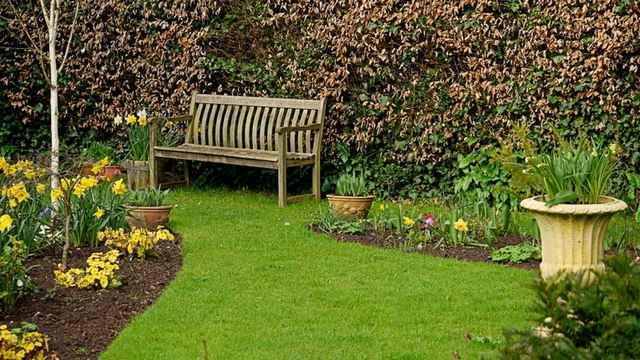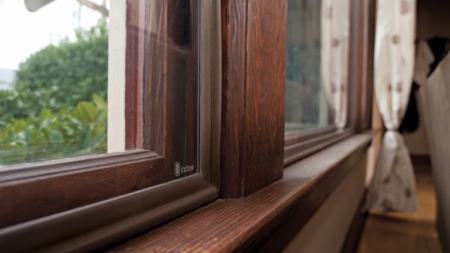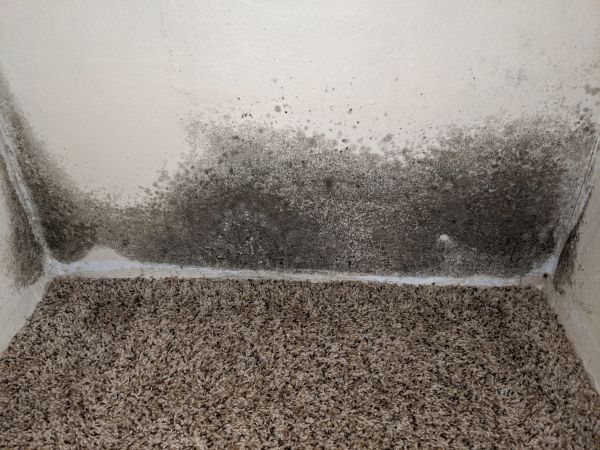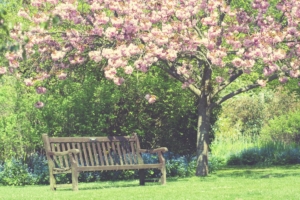 Spring has sprung and that means increasingly ample opportunity to open windows to let in some fresh air and to spend more time outside in yards and garden areas. Preparing outdoor areas for warmer weather now can save time and effort later in the summer.
Spring has sprung and that means increasingly ample opportunity to open windows to let in some fresh air and to spend more time outside in yards and garden areas. Preparing outdoor areas for warmer weather now can save time and effort later in the summer.
Post-winter clean-up
- Use a garden rake to remove any fallen leaves and other garden debris left over from winter.
- Prune any broken, diseased, or dead limbs from deciduous trees and other woody plants. Prune back spring-blooming shrubs after flowering. Clear out weeds and garden debris from flower beds. Remove or cut down any perennial foliage from the previous year and add it to a compost pile.
- If there are any bare patches on the lawn, first loosen the surface to a depth of 2 to 4 inches, then level the soil by using the back of a rake. Next, spread a mix of grass seed and compost or fertilizer over the bare spots. Tamp the surface with the flat end of the rake, then water as needed.
- Inspect, clean, and repair, if needed, any yard accessories and outdoor furniture, such as a BBQ grill, swing, bench, table, or bird bath.

Moss
- Decide whether or not to remove moss. Moss doesn’t usually hinder the growth of trees and garden plants. Moss can be aesthetically pleasing to some, but not to everyone. If you want to remove moss, it can be done by physical or chemical removal. Some people may even wish to encourage moss because it adds more greenery.
Lawn Care
- Make sure your irrigation system is in working order.
- Check the blade on the lawn mower. A dull blade will rip grass instead of cutting it which can make plants more susceptible to water loss and infection. Mow the lawn to a height of 2.5 to 3.5 inches and mow often enough so that no more than 1/3 of the grass is cut in one mowing. This height, plus frequent mowing encourages a tougher turf that is less susceptible to drought, weeds, and summer heat which means a greener lawn overall.
- Aerate your lawn to allow oxygen, water, and nutrients to reach grass roots. Soil conditioner products can do this easily by providing beneficial microorganisms that aerate the soil to help roots grow better. To apply a soil conditioner product, attach the product to the garden hose and spray the lawn.
Plant and Tree Care
- Check the pH of your soil with a soil test kit, available at home improvement stores and garden centers. Soil with a pH between 6.0 and 7.0 is best for most plants, although there are some plants, such as hydrangea and azalea, that prefer more acidic soil. Plants grown in the proper soil pH tend to grow better and are more resistant to disease and insects.
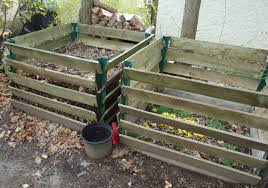
Compost containers
- Apply a 2 to 3 inch layer of mulch (such as compost, shredded bark, leaves, or recycled rubber mulch) around the base of plants, shrubs, and trees to help moderate soil temperatures, maintain soil moisture, deter weeds, and helps to increase the population of helpful soil microorganisms.
- If you don’t have a compost pile, you can start one by layering carbon-rich materials (brown) with nitrogen-rich (green) at a 3 to 1 ratio, adding a layer of soil in between each addition. Brown sources include dry leaves, pine needles, wood chips, straw, sawdust, shredded paper products, and garden trimmings. Green sources include grass clippings, green leaves, animal hair, manure, and kitchen waste.
- Fertilize growing plants, such as with compost, aged manure, or all-purpose organic fertilizer. Wait on applying lawn fertilizer until after the first spring mowing.
- If adding new plants, consider the characteristics of the garden, yard, or other outdoor space first. Soil type, sun and shade patterns, proximity to water, and direction of prevailing winds can affect plants. Thoroughly soak the soil before putting new plants in the ground. When planting container plants, loosen the root ball so that the roots can easily spread out into the soil. After planting, keep the soil slightly moist all all times during the first growing season.
 These suggestions contribute to preparing an outdoor space for warmer weather and that can mean an area that is more conducive to spending time outdoors with a good book, spending time with friends while sipping cool drinks, sports activities, barbecues, kids and pets playing outside, enjoying a garden, and more. In addition, warding away “bad bugs” and encouraging “good bugs” will be discussed in our next article.
These suggestions contribute to preparing an outdoor space for warmer weather and that can mean an area that is more conducive to spending time outdoors with a good book, spending time with friends while sipping cool drinks, sports activities, barbecues, kids and pets playing outside, enjoying a garden, and more. In addition, warding away “bad bugs” and encouraging “good bugs” will be discussed in our next article.

